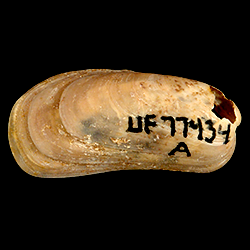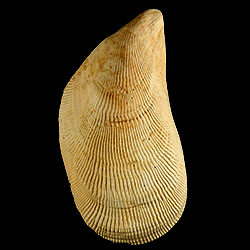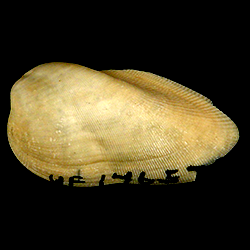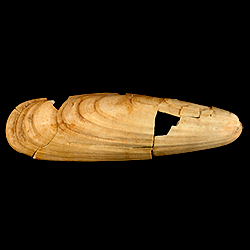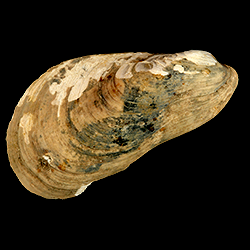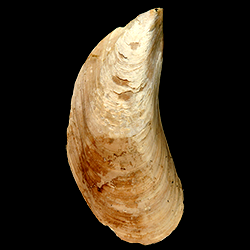
Mytilidae
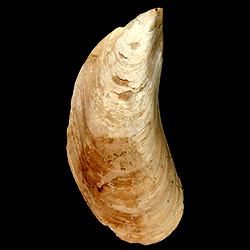
Overview
Common name: True mussels
Key morphological features: The Mytilidae range in size up to ~100mm. The shells are equivalve, inflated, and range in outline shape from subcircular to narrow and elongated, with the hinge generally positioned far to the anterior side of the shell. The shell is composed of aragonite, calcite, or both, depending on the species. Exterior sculpture is also variable, and can be absent or consist of either radial or commarginal ribbing. Valve interiors are nacreous, and have a simple, uninterrupted pallial line in most species, except lithophagines, which are siphonae, so have a pallial sinus. The interior shell margins can be either smooth or denticulate. Species of Mytilidae are heteromyarian, with the anterior adductor muscle scar being much small than the posterior scar, or absent altogether (e.g., in the genus Perna). The hinge plate is weak and adult Mytilidae often lack hinge teeth (i.e., they are edentate). Source: Mikkelsen, P.M., and Bieler, R. 2008. Seashells of Southern Florida: Bivalves. Princeton, New Jersey: Princeton University Press. 503 pp.
Geological range: Devonian to Recent (Mikkelsen & Bieler, 2008).
Geographic distribution: A distributional map for modern Mytilidae may be accessed from OBIS. A distributional map for ancient Mytilidae may be accessed from the Paleobiology Database.
Diversity: There are 412 recognized living species of Mytilidae and 54 genera (WoRMS database, unvetted). The Paleobiology Database recognizes 58 fossil genera and 887 fossil species of Mytilidae (unvetted).
Paleoecology: The Mytilidae are endo- or epibyssate, marine, filter-feeding bivalves. Most species live byssally attached to hard substrates, often forming dense aggregations. Lithophagine mytilids burrow into hard substrates, such as coral. Mytilids can be found worldwide and inhabit a range of environments from estuaries to the deep sea. Source: Mikkelsen and Bieler (2008).
Phylogenetic status: Monophyletic. The molecular phylogenetic analysis by Distel (2000) supports the monophyly of Family Mytilidae.
